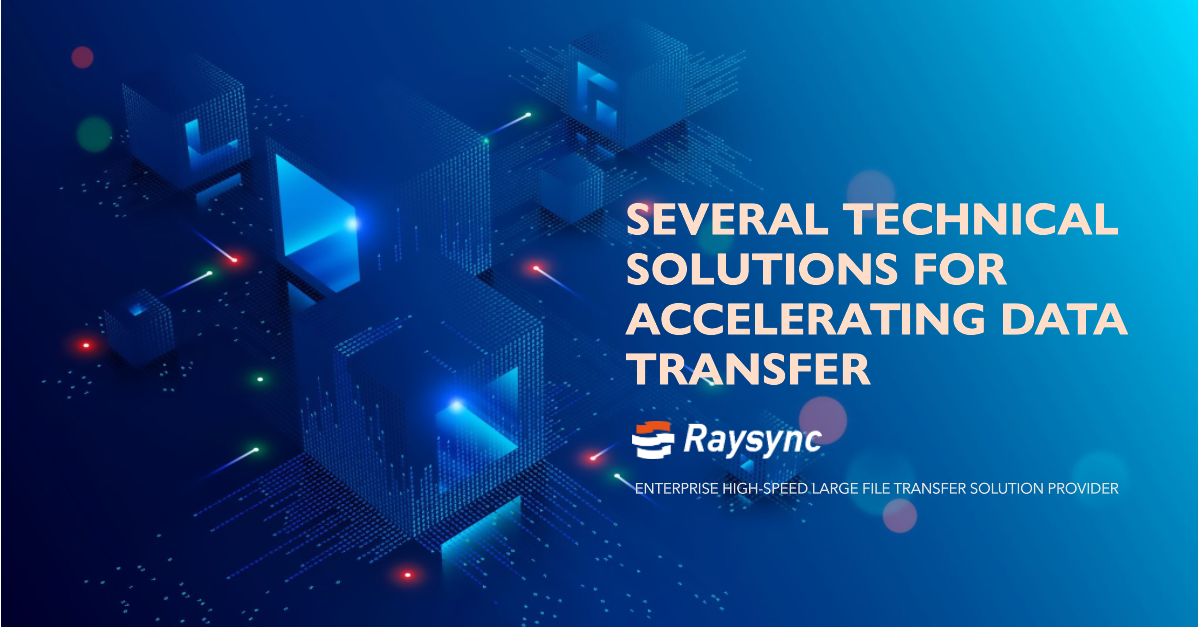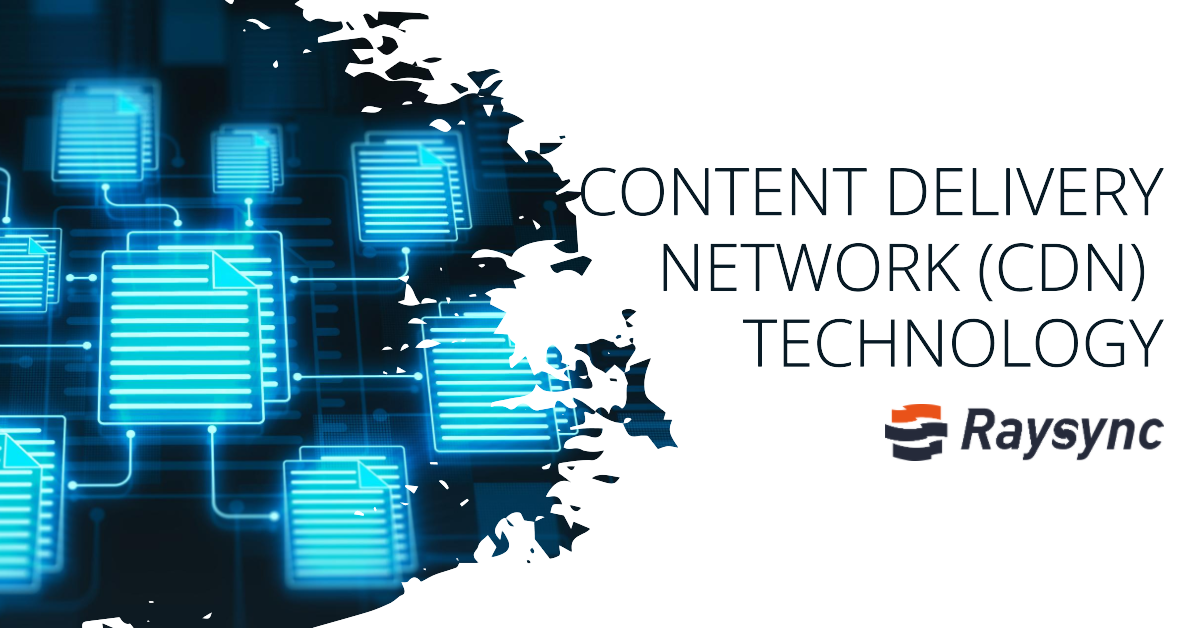Several Technical Solutions for Accelerating Data Transfer

In today's digital age, data transfer is an inevitable task in various industries. The speed of data transfer can determine the efficiency and cost of data processing. Accelerating data transfer has become a focal point for many businesses and organizations. This article will introduce some technologies used to accelerate data transfer to help enterprises address this challenge.
1. Network Acceleration Technologies
Network acceleration technologies primarily improve transfer speed by optimizing network protocols and improving transfer methods. TCP acceleration and UDP acceleration are common ways to optimize network protocols. TCP, or transfer Control Protocol, has complex mechanisms and includes some important instructions. When transmitting files or data, since the files are divided into multiple packets, and each packet carries important instructions, complete recovery and assembly are required, along with retransmitting data packets that the other party has not received. This process often results in slow transfer speeds. To optimize transfer efficiency, TCP acceleration technologies such as window size and flow control can be used. UDP, or User Datagram Protocol, achieves better transfer speeds compared to TCP by sending data packets to the destination as soon as possible. Additionally, network load balancing can also achieve network acceleration by distributing the load across multiple servers, thereby improving data transfer speed.
Raysync is a software-based large file transfer solution provider, dedicated to meeting the needs of high-speed large data transfers with high security regardless of file size, distance or network conditions, providing enterprises with fast, safe, stable, cost-efficient, and convenient large file transfer services.
2. Storage Acceleration Technologies
Storage acceleration technologies improve storage transfer speeds through optimization of data read/write, data compression, data caching, etc. SSD, RAID, and hardware acceleration are three commonly used storage acceleration technologies. SSD, or Solid State Drive, offers higher read/write speeds, lower latency, and longer lifespan compared to traditional hard drives. Therefore, using SSD can improve file transfer speed in handling large files. RAID, or Redundant Array of Independent Disks, is a disk array technology that combines multiple disks into a single logical disk for data backup and quick access. RAID technology can combine multiple hard disks into a logical disk, thus achieving data redundancy and improving data transfer speed and reliability. Hardware acceleration provides acceleration features at the hardware level, such as using GPUs to accelerate data processing or improving data transfer speed through techniques like high-speed caching and data prefetching.

3. Striping Technologies
Striping technology involves storing file data in blocks and then transferring them between multiple devices, thereby quickly improving transfer speed. Implementation methods include cluster striping and cross-device striping. These techniques essentially divide files into blocks and simultaneously transmit them through multiple devices, thereby enhancing data transfer speed and efficiency. In cluster striping, the size of data blocks varies to adapt to different application scenarios. Cross-device striping involves dividing file data into multiple stripes and assigning them to different devices for storage, thus improving data access speed and efficiency.
4. Aggregation Linking Technology
Aggregation linking technology combines multiple network links to improve transfer speed. Link aggregation technology can aggregate multiple network links and different network protocols to achieve multi-link concurrent transfer. Additionally, aggregation linking can optimize transfer protocols, compress data, reduce retransfer, etc., to improve transfer speed and optimize data transfer efficiency.
5. Compression Technology
Compression technology aims to improve data transfer speed and efficiency by reducing data size. Common compression techniques include Gzip and LZ4. Gzip is a streaming compression technique known for its high compression ratio and small data volume during transfer. It also enables encryption during transfer to ensure data security. LZ4 is a real-time compression technique suitable for compressing infinite data streams, such as network transfers or disk files. Using compression technology reduces data transfer time and space consumption, thereby improving data transfer speed and efficiency.
6. Encryption Technology
While encryption technology does not have the goal of improving transfer speed, it can enhance data security during transfer and, in some cases, even improve transfer speed. For example, when using SSL/TLS protocols for data transfer, encryption algorithms and public-private key encryption protect data security. This encryption method can also reduce network interception, decrease data transfer latency, and improve data transfer efficiency.
7. Distributed Transfer Technology
Distributed transfer technology improves transfer speed and reliability by dispersing data transfer among multiple nodes. For example, the BitTorrent protocol is a distributed file transfer protocol that divides files into multiple small pieces and distributes them among multiple nodes for block-by-block transfer, thereby accelerating file transfer speed. Distributed transfer technology can also enhance data transfer efficiency through optimization of data caching, data backup, etc.

8. Content Delivery Network (CDN) Technology
CDN technology utilizes multiple distributed servers to store and transmit data, selecting appropriate servers based on the principle of proximity to users, thereby improving data transfer speed and reliability. CDN technology typically includes acceleration nodes, response nodes, CNAME, DNS load balancing, and other technologies. Servers can be placed in different geographic locations to cache and distribute common resources, improving data transfer efficiency.
Using these technologies in the data transfer process can significantly improve transfer speed and quality, avoid issues such as data transfer delays and network congestion, and help reduce network bandwidth and CPU consumption. In today's era of the Internet and cloud computing services, data transfer speed is increasingly important, and technologies such as accelerating data transfer have become indispensable.
You might also like

Industry news
November 8, 2022Isn't It Time You Replaced Your FTP Server?
FTP is designed as a simple mechanism, which can exchange files between computers when the new network and information security are not yet mature.

Industry news
September 28, 2021Why Should Enterprises Use File Sharing and Synchronization Tools to Ensure File Security?
Raysync has been focusing on providing one-stop large file transmission solutions for enterprises since its establishment.

Industry news
October 16, 2020Raysync Tutorial - Three File Sync Modes You Should Know
Raysync is based on Raysync ultra-high-speed transmission protocol, and the synchronous backup function of GB/TB large files is developed, which can increase the speed by more than 30 times.